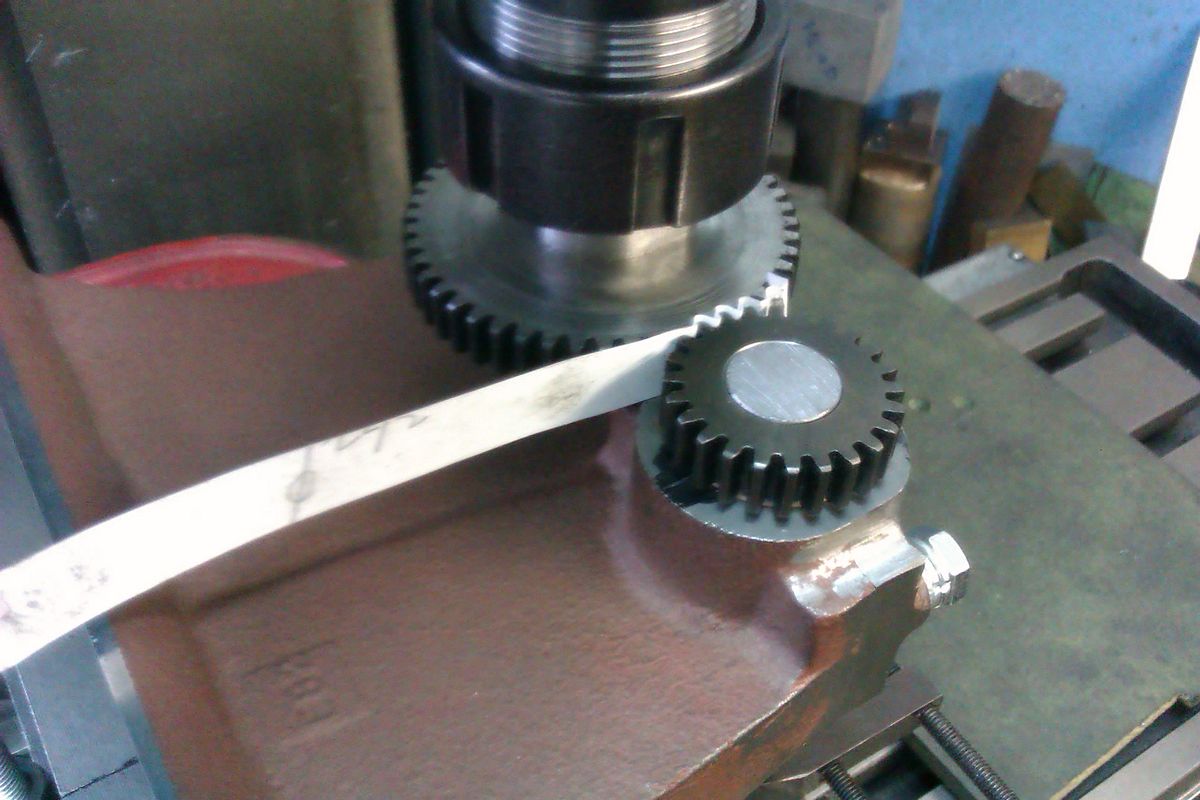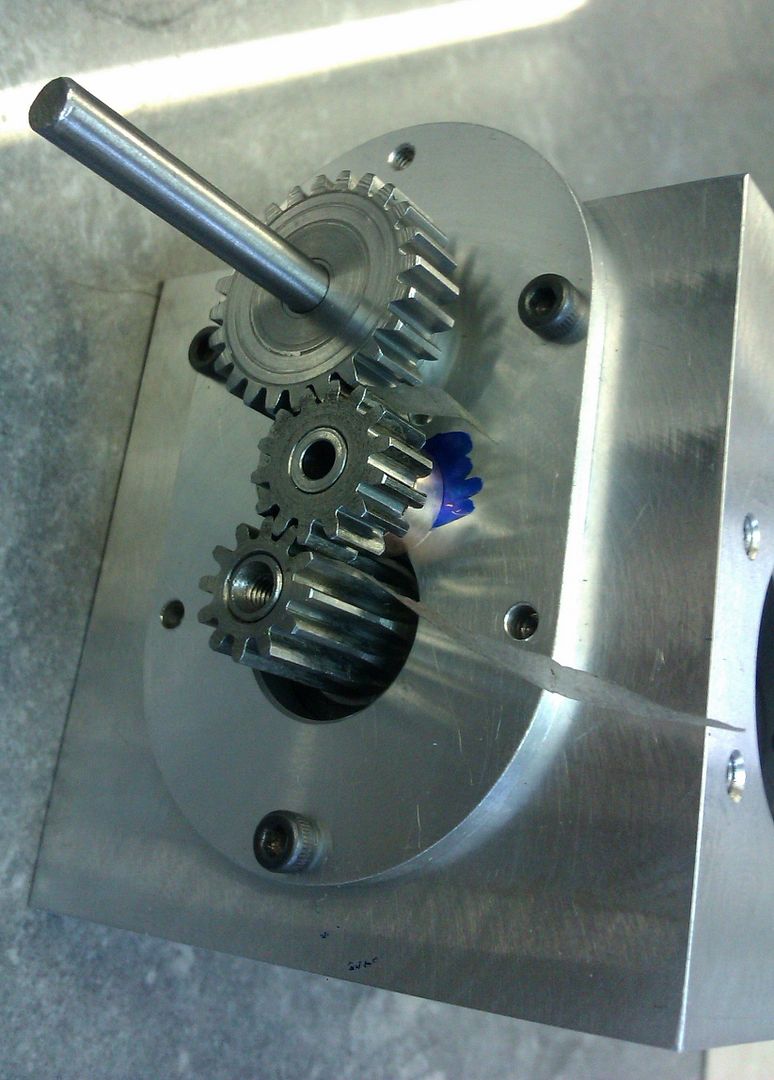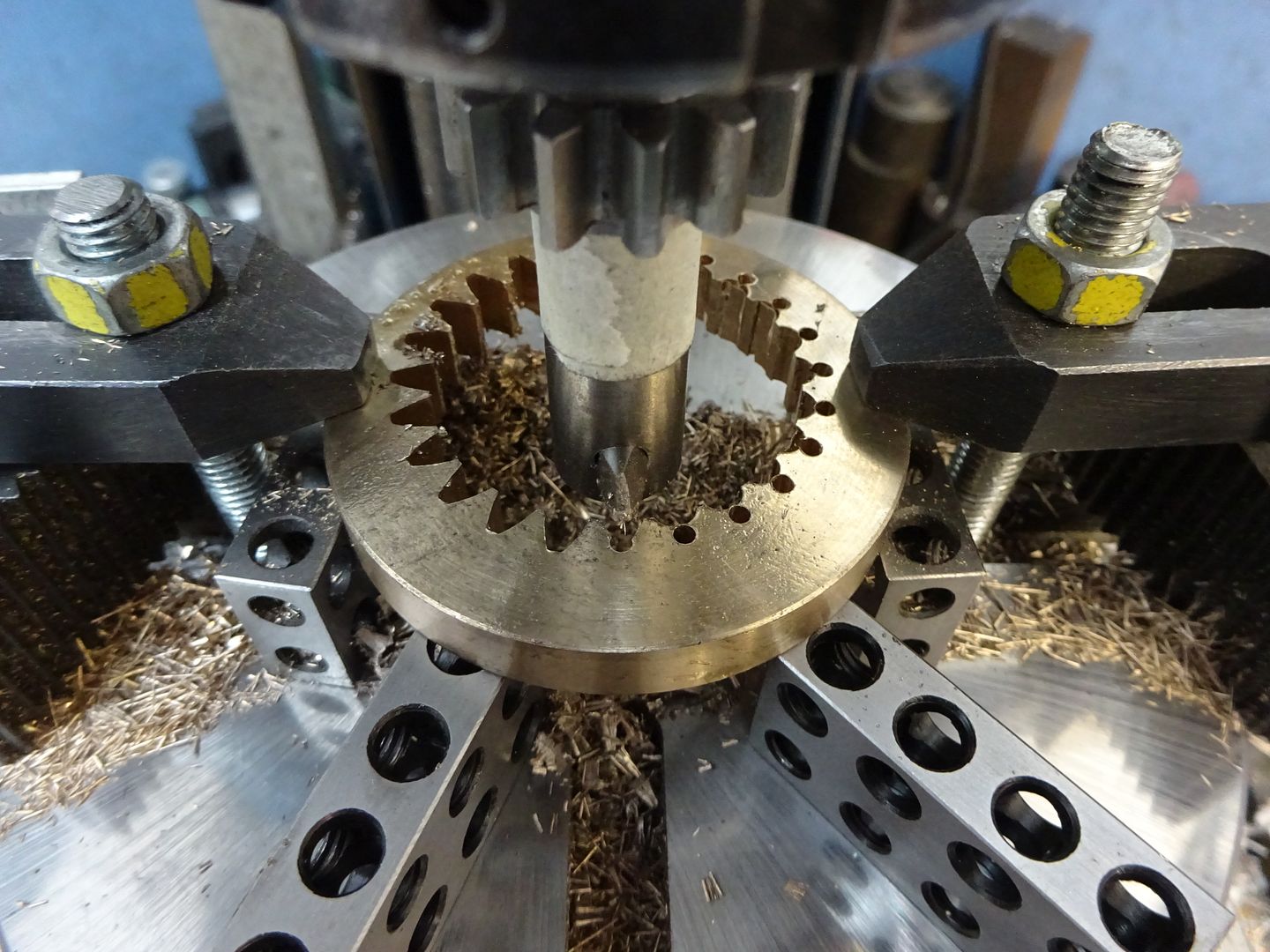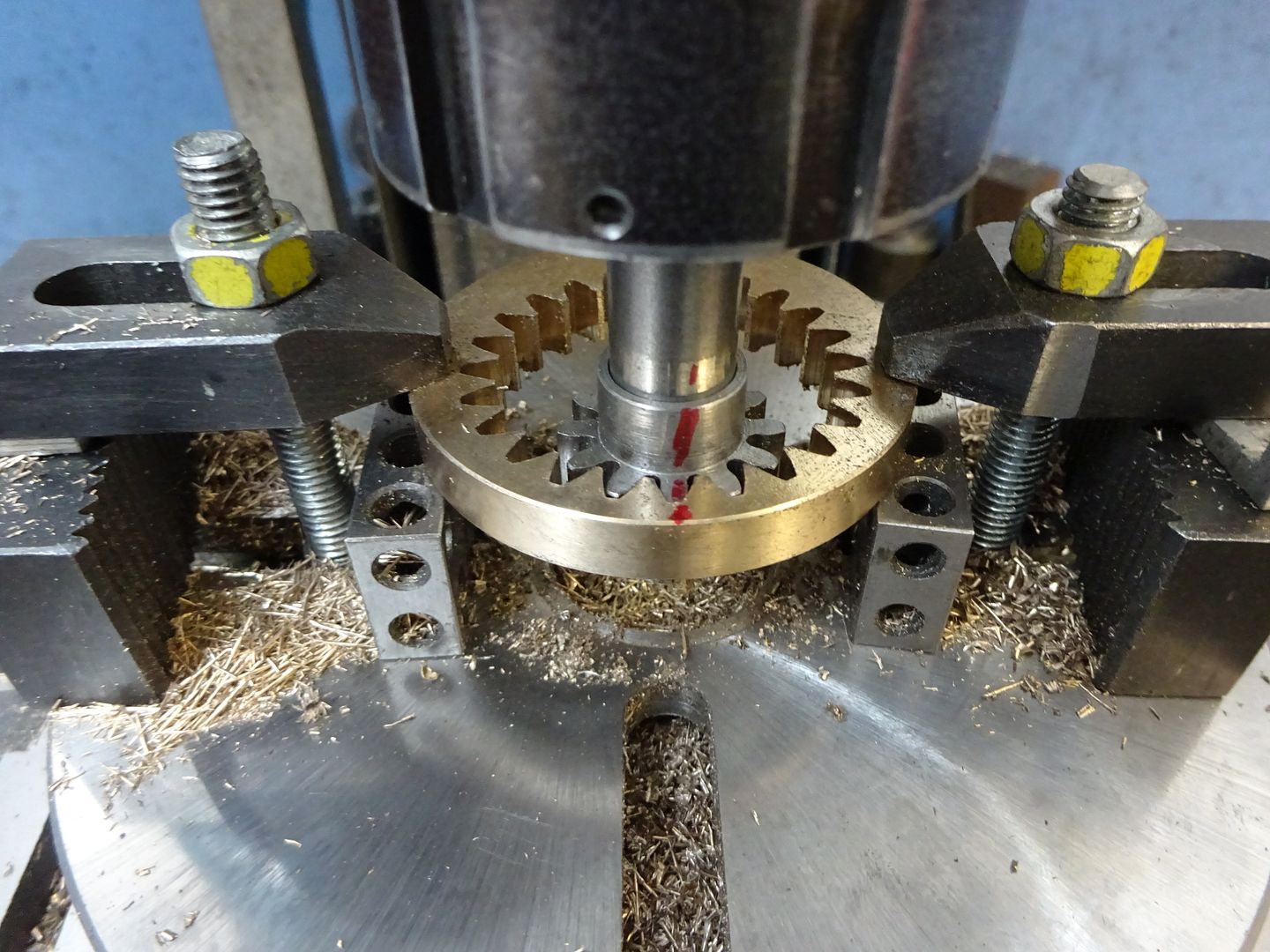- Joined
- Sep 2, 2011
- Messages
- 1,341
- Reaction score
- 360
i know i have asked several questions about gear cutters in the past but today i stumbled across some information that if i understand correctly will make my life much easier.
in particular i only want to work with module 1 for my question because thats about the only thing i use.
so if i have a 50 tooth gear i want to cut with module 1 then the gear blank outside dia would be 52 mm right? just add 2 mm to the number of teeth you want to get the outside gear blank.
then on total depth of cut - the bottom of the "V" between each tooth. all you do for a 50 tooth is subtract 2 mm from the number of teeth for 48 mm dia measured from bottom v to bottom v on the other side right?
in other words +2 mm over the number of teeth for gear blank dia
and depth of cut is 2mm deep for all module 1 cuts.
the magic number is 2mm
if this info is correct then it makes my life much easier on calculating module 1 gears
in particular i only want to work with module 1 for my question because thats about the only thing i use.
so if i have a 50 tooth gear i want to cut with module 1 then the gear blank outside dia would be 52 mm right? just add 2 mm to the number of teeth you want to get the outside gear blank.
then on total depth of cut - the bottom of the "V" between each tooth. all you do for a 50 tooth is subtract 2 mm from the number of teeth for 48 mm dia measured from bottom v to bottom v on the other side right?
in other words +2 mm over the number of teeth for gear blank dia
and depth of cut is 2mm deep for all module 1 cuts.
the magic number is 2mm
if this info is correct then it makes my life much easier on calculating module 1 gears








